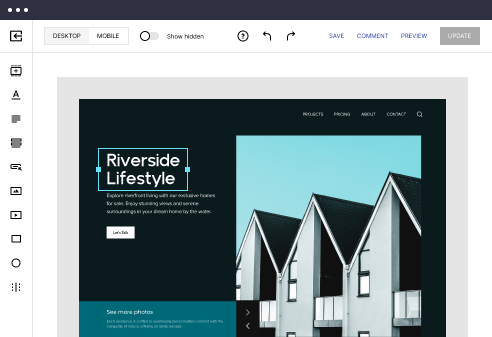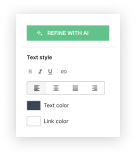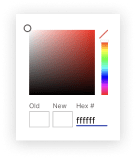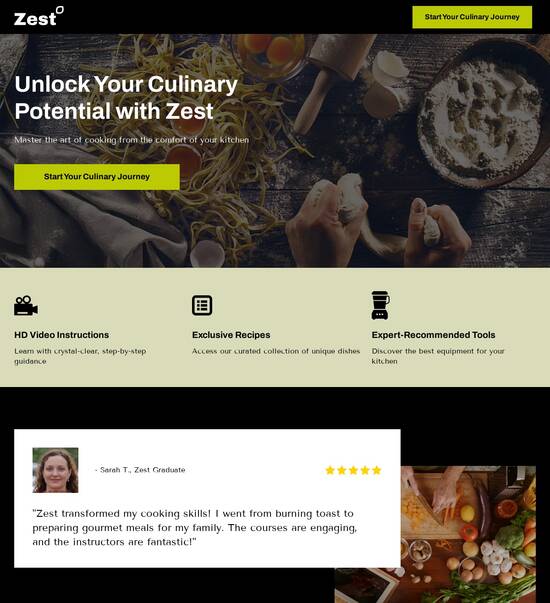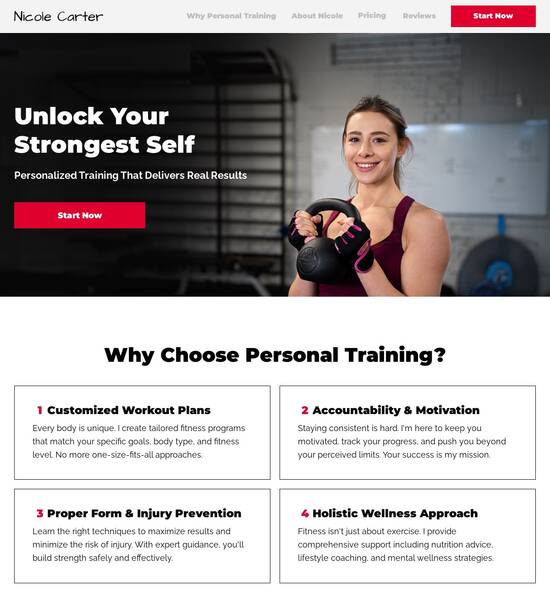
Next.js optimized join waitlist page template
Explore Similar TemplatesAbout template
Supercharge your join waitlist page with Next.js for outstanding performance! Learn more today.
Recommended templates
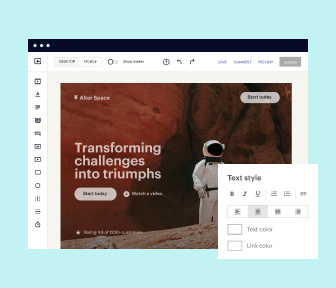
Easy to build without coding
With the intuitive drag-and-drop builder, anyone on your team can create high-converting pages without any knowledge of code or design. Make enhancements to your landing page with custom widgets using Javascript, HTML/CSS, or third-party scripts.
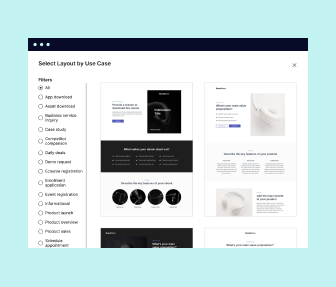
Multiple layouts for any industry and goal
Select from 500+ landing page layouts built to boost conversions across industry-specific scenarios. Customize them by adjusting fonts, adding images, and generating on-brand content with the AI assistant. Quickly scale with Instablocks® and Global Blocks that you can save, reuse, and update globally.
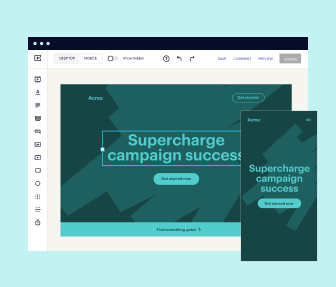
Loads fast and looks polished on any device
Every template is responsive, which means they present professionally on any device and load blazingly fast with our Thor Render Engine. You can also power them up with Google AMP technology to deliver an unparalleled mobile experience and drive higher conversions.
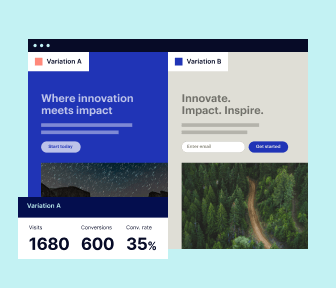
Robust analytics & experimentation
Get real-time updates and reporting across all your devices, showing the number of visitors, conversions, cost-per-visitor, and cost-per-lead. Launch AI-powered experiments, run A/B tests, and use heatmaps to analyze user behavior, then optimize your landing page to maximize conversions.

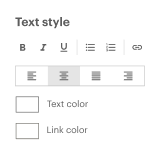
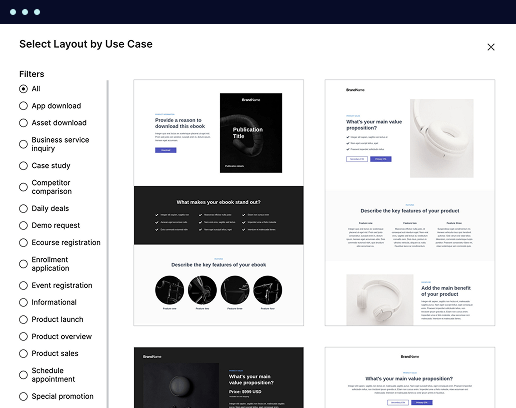
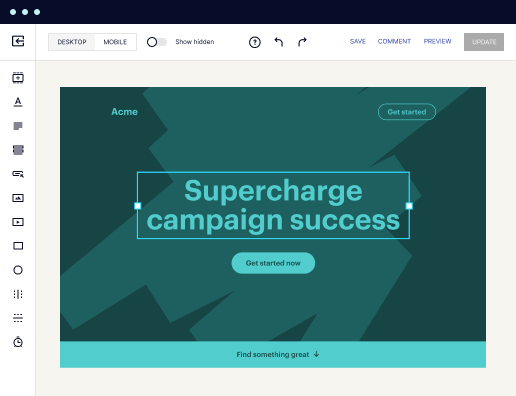
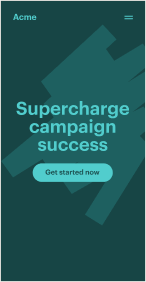
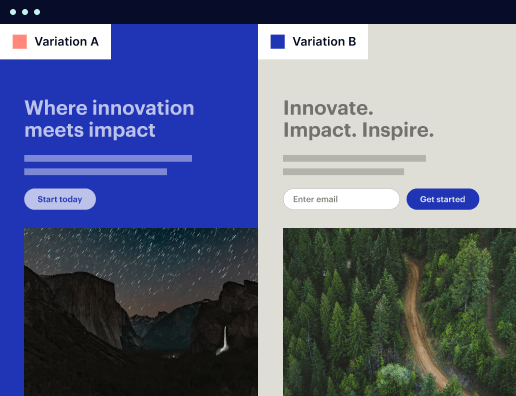

Easy to build without coding
With the intuitive drag-and-drop builder, anyone on your team can create high-converting pages without any knowledge of code or design. Make enhancements to your landing page with custom widgets using Javascript, HTML/CSS, or third-party scripts.
Multiple layouts for any industry and goal
Select from 500+ landing page layouts built to boost conversions across industry-specific scenarios. Customize them by adjusting fonts, adding images, and generating on-brand content with the AI assistant. Quickly scale with Instablocks® and Global Blocks that you can save, reuse, and update globally.
Loads fast and looks polished on any device
Every template is responsive, which means they present professionally on any device and load blazingly fast with our Thor Render Engine.
Robust analytics & experimentation
Get real-time updates and reporting across all your devices, showing the number of visitors, conversions, cost-per-visitor, and cost-per-lead. Launch AI-powered experiments, run A/B tests, and use heatmaps to analyze user behavior, then optimize your landing page to maximize conversions.
All the features you need to build next landing page template
Explore more featuresLearn how to build join waitlist landing page
FAQs
Leading the way in building high-performing landing pages





An optimized landing page template for effective digital marketing
Creating a high-converting landing page is crucial for marketers striving to maximize their return on investment. Instapage offers the most powerful landing page and conversion rate optimization (CRO) platform, equipping you with tools that enhance your campaigns, regardless of your budget or team size. With a focus on user experience and analytics, these templates are designed to accelerate your marketing initiatives.
Understanding the Next.js optimized join waitlist page template
The Next.js optimized join waitlist page template streamlines the process of capturing leads and engaging potential customers effectively. With its fast loading speeds and user-friendly interface, this template is perfect for SaaS and tech companies looking to grow their email lists. Key features include seamless integration with email marketing services, responsive design, and attractive layouts that enhance user engagement.
- Rapid deployment: Instapage's intuitive builders enable you to launch your landing pages quickly using pre-built templates, saving time on design.
- High conversion rates: The layout and elements are tested to ensure they drive user action, effectively capturing leads and boosting your conversion rates.
- Integration capabilities: Connect with major CRM and email marketing platforms seamlessly to keep your lead data organized.
Why choose Instapage for landing page optimization?
Instapage stands out in the crowded marketplace of landing page builders thanks to its unique features designed for marketers.
- Personalization tools: Create dynamic content that addresses each visitor's unique needs based on their interactions with your ads.
- Collaboration features: Work seamlessly with your team by providing instant feedback and making real-time edits to landing pages.
- Analytics and optimization: Utilize A/B testing and detailed heatmaps to refine your landing pages continually, ensuring high conversion rates.
Steps to effectively utilize the Next.js optimized join waitlist page template
Follow these steps to create an effective waitlist page that maximizes your marketing efforts.
- Select the template: Begin by choosing the Next.js optimized join waitlist page template from Instapage’s library tailored for SaaS and tech industries.
- Customize the elements: Modify the text, images, and calls to action using Instapage's drag-and-drop builder to fit your brand's voice and objectives.
- Launch and monitor: Publish your landing page and use the built-in analytics tools to monitor traffic patterns and conversions, making data-driven adjustments as needed.
By following these steps, you ensure that your page remains optimized for maximum lead conversion.
In summary, the Next.js optimized join waitlist page template offers advanced features that empower marketers to craft pages that not only attract but retain leads effectively.
Ready to transform your digital marketing strategies? Start creating high-converting landing pages with Instapage today and watch your campaigns thrive.
The future of waitlist management: crafting an optimized join waitlist page with Next.js
Understanding the significance of a join waitlist page
Waitlist pages serve a crucial role in project development, especially for startups and tech-driven companies. They not only help gauge user interest in a product but also allow marketers to build a list of potential users before the official launch. By capturing user data through these forms, businesses can engage directly with their audience, informing them of progress and updates, which keeps the excitement alive as they await the product rollout.
User experience plays a significant role in the effectiveness of a join waitlist page. A smooth registration process enhances the first interaction between the user and the application. If the waitlist experience is seamless and intuitive, it establishes a brand's credibility and professionalism. Rushing through or overlooking the signup process may frustrate potential users, leading to lost opportunities.
Introducing Next.js: a powerful framework for modern web development
Next.js stands out in the realm of web development frameworks thanks to its comprehensive capabilities. By providing server-side rendering (SSR) and static site generation (SSG), it enhances both performance and SEO. Websites built on Next.js load faster and are easier for search engines to index, driving organic traffic and improving visibility.
Additionally, Next.js integrates seamlessly with various content management systems (CMS) like Contentful and Sanity. This compatibility allows developers to pull dynamic content into their join waitlist pages efficiently. For instance, a successful project integrating Contentful and Next.js showcased how real-time content updates could be achieved. This not only simplifies data management but enriches the user experience.
Key features of an optimized waitlist page template
Creating a responsive design is essential for ensuring accessibility across devices. With a significant amount of traffic coming from mobile users, it is imperative that a waitlist page looks great on smartphones, tablets, and desktops alike. By employing CSS frameworks like Tailwind CSS or styled-components, developers can create fluid layouts that adapt gracefully to the varying screen sizes of users.
Moreover, dynamic content loading is key to engaging users in real time. Client-side rendering services can be utilized for updates that keep the audience informed without needing page reloads. Lazy loading images and other heavy assets can also lead to faster load times, maintaining user interest and encouraging them to engage more thoroughly with the waitlist page.
Preparing your development environment
Setting up a Next.js project is a straightforward endeavor. First, developers need a modern browser and Node.js installed on their computers. Running the command 'npx create-next-app your-project-name' creates the project structure for you. As your development environment becomes ready, understanding the directory structure will pave the way for clear organization, which is critical when scaling your join waitlist page.
Next.js is constantly evolving, offering beta features that developers can leverage to be at the forefront of web technology. Keeping an eye on the Next.js updates ensures that your project can incorporate the latest improvements, which can lead to enhanced productivity and user satisfaction.
Building the join waitlist page: essential components
Crafting the user interface is a pivotal step in the development of an optimized join waitlist page. Best practices in UI/UX design dictate that forms must be visually appealing yet functional. Simple input fields, clear progress indicators, and prominent call-to-action buttons contribute to a user-friendly experience. Ensuring that design elements guide the user effortlessly through the registration process can significantly increase conversion rates.
Incorporating multiple content types also enhances user engagement. Utilizing a mix of text, vibrant images, and even brief video snippets can create a dynamic experience. Properly structuring this content ensures clarity and captures users' attention, which can motivate potential users to subscribe eagerly.
Streamlining the registration process
Designing the registration flow should prioritize usability. Breaking down the signup process into manageable stages can significantly lower user frustration. For instance, using multi-step forms instead of overwhelming users with a long page of fields can enhance overall satisfaction. The ease of completing the form is directly linked to the likelihood of conversion.
Furthermore, validation and user feedback mechanisms are vital for a user-friendly experience. Implementing real-time form validation ensures that users receive immediate feedback on their inputs, reducing errors and confusion. A simple notification stating ‘Your email is valid’ versus ‘Please enter a valid email’ can improve overall user satisfaction and boost conversion rates.
Implementing analytics and tracking
Integrating analytical tools is a strategic move for gauging the performance of your join waitlist page. Setting up Google Analytics provides vital insights into user interactions and conversion metrics. Understanding how users engage with different elements of the page can guide marketers in optimizing these sections for better performance.
A/B testing should also play a key role in the ongoing improvement of the join waitlist page. It's critical to test various versions of landing pages, analyzing metrics to identify what resonates best with users. For example, tweaking button color, text placement, or even the registration form's length can lead to significant increases in conversion.
Deployment: moving from development to production
The process of deploying your Next.js application should be executed with care. Choosing the right hosting platform is critical; popular options like Vercel and Netlify are tailored for Next.js applications and provide out-of-the-box configurations for optimal performance. These platforms handle scaling seamlessly, allowing developers to focus on enhancing user experience.
Post-deployment maintenance is equally crucial. Regular updates to content and features based on user feedback keep the waitlist page relevant. Engaging the users who have already joined the waitlist—through email updates or community engagement—can strengthen brand loyalty and ensure that potential customers remain excited and informed about the upcoming product.
Real-life case studies: success stories from the nerd community
The advantages of utilizing optimized join waitlist pages built with Next.js become clear when examining real-life case studies. Numerous projects showcase how intelligent design and effective waitlist strategies have led to substantial user turnout at launch. For instance, a SaaS company built their pre-launch waitlist page with Next.js, gaining thousands of sign-ups by effectively highlighting the unique benefits of their product.
User testimonials praising the experience emphasize the need for intuitive UI/UX design. Metrics showing high conversion rates demonstrate how effective waitlist pages can translate to successful product launches. Documenting these examples provides invaluable insights into what works when building user anticipation.
Looking ahead: the evolution of waitlist pages in the digital world
The future of waitlist management is poised for significant transformation, particularly with technological advancements like AI and machine learning playing a role in user engagement. These tools are expected to personalize user experiences even further, ensuring enhanced interactions based on user behavior. For instance, using AI to suggest content or adjust waitlist pages dynamically based on user preferences could redefine how developers build these forms.
For aspiring developers, embracing Next.js for new projects is a wise choice. With its robust feature set, focusing on performance, SEO, and user-friendly experiences makes it an essential framework for modern web development. By experimenting with Next.js, developers can tap into emerging trends and advanced functionalities that will keep them ahead in the competitive landscape.
Ready to skyrocket conversions?
Supercharge your ad campaigns with high-performing landing pages
Get started